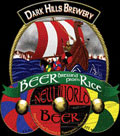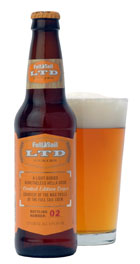A couple of newspaper stories this week about beer for those who are gluten intolerant . . .
A bit of background: According to government statistics, more than 2 million Americans have been diagnosed with celiac disease. The genetic disorder causes stomach cramps and digestive problems and can lead to other serious health risks. People with celiac disease cannot tolerate gluten, a protein found in wheat, barley, rye, oats and spelt. Those are the grains traditionally used to brew beer.
NorthJersey.com has an overview of what’s available now. Those range from the hard-to-find Ramapo Valley Brewery Honey beer to much-easier-to-locate Redbridge from Anheuser-Busch, a sorghum beer released in December and available throughout the country, including outlets such as Wal-Mart.
It can still be confusing, as the story explains:
Unlike food labels that say “reduced sodium” or “trans-fat free,” the Food & Drug Administration hasn’t established a definition for “gluten-free” packaging. But for now, Scott says, “you’re not supposed to put ‘gluten-free’ on the packaging. You can only list it as ‘wheat-free.’ “
A syndicated column by William Dowd (here’s the version from the Falls Church News-Press) includes three beers in development at Dark Hills Bbrewery in Arkansas, itself a progress in work.
 Founders Leigh Nogy and Connie Rieper-Estes are building a gluten-free facility to assure no cross-contamination. They plan to have their beers certified gluten-free. Most will be rice-based.
Founders Leigh Nogy and Connie Rieper-Estes are building a gluten-free facility to assure no cross-contamination. They plan to have their beers certified gluten-free. Most will be rice-based.
Dowd conducted a tasting with seven beers, including a lemon beer, an amber and a stout from Dark Hills. The tasting notes:
Sweet Stout) “A caramel nose, something like burnt brown sugar. . . . Really full-bodied. . . . I don’t know if I’d drink a lot of it, but I can see how it would be a substitute if you have a celiac problem.”
(Amber Ale) “Reminds me of some good ciders I’ve had. . . . Lingering aftertaste instead of just disappearing, which I like. . . . I could have a few of these. . . . Goes really well with food.”
(Lemon Ale) “This one makes me think of summer . . . Like a lemonade-style drink, but a little more syrupy. . . . . Limoncello, that’s what it’s like. . . . I could drink this over ice like a liqueur.”
There’s ongoing discussion among brewers about how closely beer brewed without traditional grains can match the flavor of beer made with those grains. To what standard should “gluten free” (or almost free) beers be judged? Dowd chose to treat them just like any other beers. And his standard is how a beer handles pizza.
We had gathered to assess a wide variety of beers in a blind tasting I devised to give a new import and some new domestic products – a true trial by fire against established mega-brands as well as against cheese, mushroom and pepperoni pizzas.
In my view, how well a beer fares against others of its kind is strictly a matter of personal taste. But, if a beer can’t hold its own against pizza, it has no business being sold in these United States.
Unless he went to a particularly special effort – and didn’t mention that – the pizzas were made with grain-based dough, not something celiacs can tolerate.
This is a different approach than some beer distributors have used in introducing sorghum-based beers, most notably Redbridge. They are targeting restaurants that offer gluten-free dishes. That seems like a more sensible approach.

 – Full Sail Brewing in Oregon is ready to ship the second beer in its LTD series. The newly designed bottle labels describe LTD Bottling 02, as a “light-bodied nonetheless hella good limited edition lager.”
– Full Sail Brewing in Oregon is ready to ship the second beer in its LTD series. The newly designed bottle labels describe LTD Bottling 02, as a “light-bodied nonetheless hella good limited edition lager.” Founders Leigh Nogy and Connie Rieper-Estes are building a gluten-free facility to assure no cross-contamination. They plan to have their beers certified gluten-free. Most will be rice-based.
Founders Leigh Nogy and Connie Rieper-Estes are building a gluten-free facility to assure no cross-contamination. They plan to have their beers certified gluten-free. Most will be rice-based. A British watchdog has
A British watchdog has  Anheuser-Busch has added another specialty beer to its “reigional only” lineup.
Anheuser-Busch has added another specialty beer to its “reigional only” lineup.